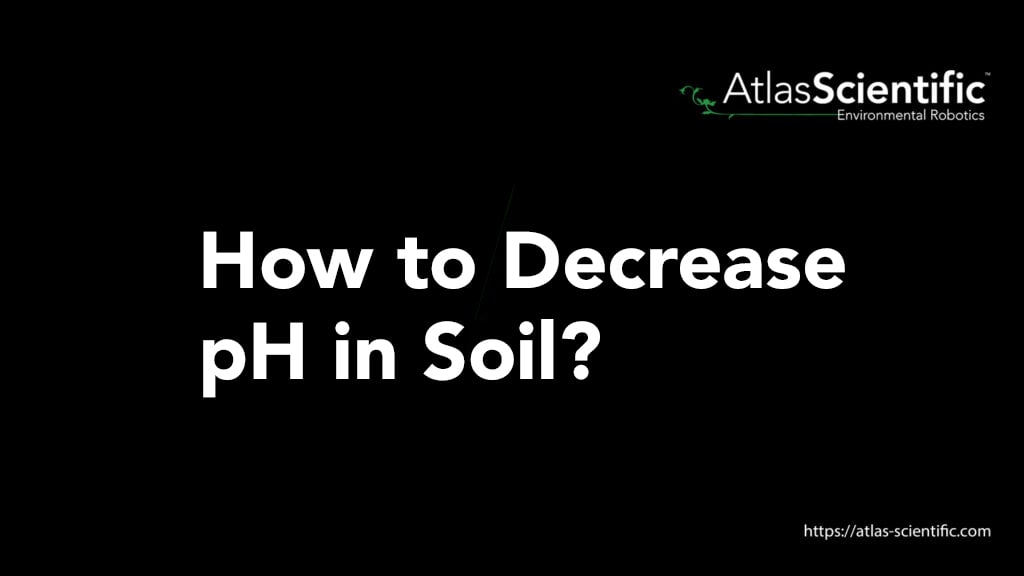Subtotal: $259.99

10 Sensors For Greenhouse Monitoring – A Guide To Precision Agriculture
Greenhouse monitoring is the backbone of precision agriculture, and it starts with the right sensors. The 10 most essential sensors to optimize crop health and
Product Categories

Soil pH is reduced by adding commercially available options like elemental sulfur, aluminum sulfate, and iron sulfate, or natural soil acidifiers like peat moss and compost.
Is the pH of your soil too high? Did you know that soil that has a high pH creates toxic levels of certain nutrients, which are harmful to plants?
The pH in soil measures the concentration of the hydrogen ions and defines if it is an acid or base (alkaline). This pH scale ranges from 0 to 14, with 7 being neutral.
pHs of less than 7 indicate acidic soil, and above 7 indicate that the soil is alkaline. Soil pH is also referred to as “soil reaction” or “master soil variable”.
Soil pH is often overlooked in favor of nutrient levels and soil consistency, yet, having the correct pH is key to growing healthy crops.
Soil pH directly affects the number of nutrients and chemicals dissolved in soil water, and therefore, the number of nutrients available for plants to grow and improve their overall health. So, you must get the pH level right for what you are growing.
The majority of soils have a pH value between 3.5 and 10. The most optimal soil pH for plants is slightly under 7, yet a slightly acidic pH indicates a good balance of water and nutrients from decaying organic matter.
Different plant types thrive at different pH levels. Below are a few examples:
Many factors affect the pH of soil. These factors include the following:
The choice of which material is used to decrease the pH in soil depends on how fast you want the pH to change and the type or size of plant you are growing.
Soil pH can be reduced most effectively by adding commercially available options like elemental sulfur, aluminum sulfate, and iron sulfate.
Elemental sulfur is the most popular way to decrease the pH in soil, as it is safe to use, relatively cheap, and it is available at most local garden centers and agriculture suppliers. The only downside is its slow reaction time with soil. For elemental sulfur to decrease soil pH, it must go through two processes: a slow biological process followed by a rapid chemical process. This process can take 3 to 6 months to complete.
Aluminum sulfate, on the other hand, reacts with soil very quickly, as it only has to complete the chemical process. The two disadvantages to using aluminum sulfate are its toxicity to plants and the amount that is needed to decrease the pH.
Although Iron sulfate (ferrous sulfate) is a fast reactor in soil, it is more expensive than elemental sulfur as it requires eight times the amount of product to decrease the pH in soil than elemental sulfur. Iron sulfate decreases the pH in soil by disassociating the salts to iron and sulfuric acid, binding iron to clay or precipitates, and therefore, neutralizing the soil.
As aluminum sulfate and elemental sulfur are more aggressive ways to decrease pH in soil, you must follow the recommended amounts.
To help you out, we have the generic guidelines outlined below:
| Current pH | Desired pH | ||||
| 6.5 | 6.0 | 5.5 | 5.0 | 4.5 | |
| 8.0 | 0.3 | 0.4 | 0.5 | 0.6 | 0.7 |
| 7.5 | 0.2 | 0.3 | 0.4 | 0.5 | 0.6 |
| 7.0 | 0.1 | 0.2 | 0.3 | 0.4 | 0.5 |
| 6.5 | 0.1 | 0.2 | 0.3 | 0.4 | |
| 6.0 | 0.1 | 0.2 | 0.3 |
| Current pH | Desired pH | ||||
| 6.5 | 6.0 | 5.5 | 5.0 | 4.5 | |
| 8.0 | 1.8 | 2.4 | 3.3 | 4.2 | 4.8 |
| 7.5 | 1.2 | 2.1 | 2.7 | 3.6 | 4.2 |
| 7.0 | 0.6 | 1.2 | 2.1 | 3.0 | 3.6 |
| 6.5 | 0.6 | 1.5 | 2.4 | 2.7 | |
| 6.0 | 0.6 | 1.5 | 2.1 |
Note that these are the generic rates, so it is always best to look at your governmental website for your region to know how much to apply to your soil. Alternatively, you can contact your local agricultural supplier for treating alkaline soils in your area.
Adding natural soil acidifiers like peat moss, rotted manure, or organic leaf compost will also help lower the pH of your soil over time. Peat moss is particularly effective if you have sandy soils.
When decreasing the pH of soil, you must consider the buffering capacity of the soil. The buffering capacity is the soil’s ability to resist pH changes.
The organic matter and clay content play a large part in the buffering and cation exchange capacity in soil. Cations are positively charged ions that exchange in soil when negatively charged clays are present. This is referred to as “cation exchange capacity”. The higher the cation exchange capacity, the higher the buffering capacity.
There are different approaches to measuring the pH in soil, but the best concept is to take a soil sample, mix it with water to create mud, and take a pH test device to measure the soil’s pH.

While qualitative pH test strips give you a general color-scale range, pH is best measured with a pH probe. A pH probe uses a reference and test electrode to relate the ion activity between the soil sample and the reference to produce a measurable, but small, voltage.
Many types of pH probes exist, yet the working principle of measuring pH with a pH probe remains the same.
When pH levels inside soil become too high it becomes a major problem with nutrient availability.
Soil pH is reduced most effectively by adding elemental sulfur, aluminum sulfate, and iron sulfate, or natural soil acidifiers (peat moss, rotted manure, or compost).
If you are unsure which pH probe or testing approach will suit your testing needs, do not hesitate to reach out to the world-class team at Atlas Scientific.






Greenhouse monitoring is the backbone of precision agriculture, and it starts with the right sensors. The 10 most essential sensors to optimize crop health and

Hydroponics has revolutionized the way people grow food, offering soil-free methods that deliver nutrients directly to plant roots in water-based systems. But success in hydroponics